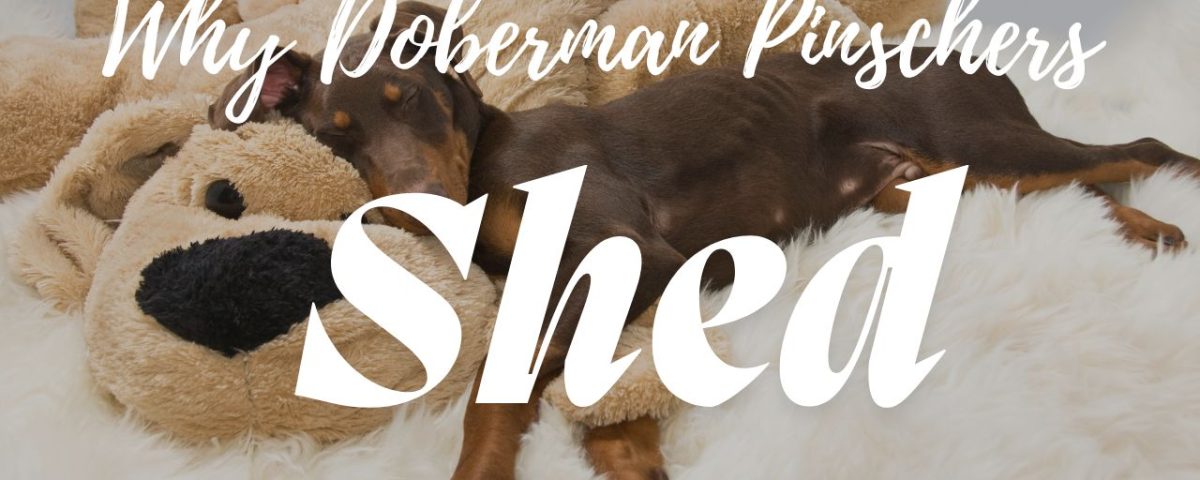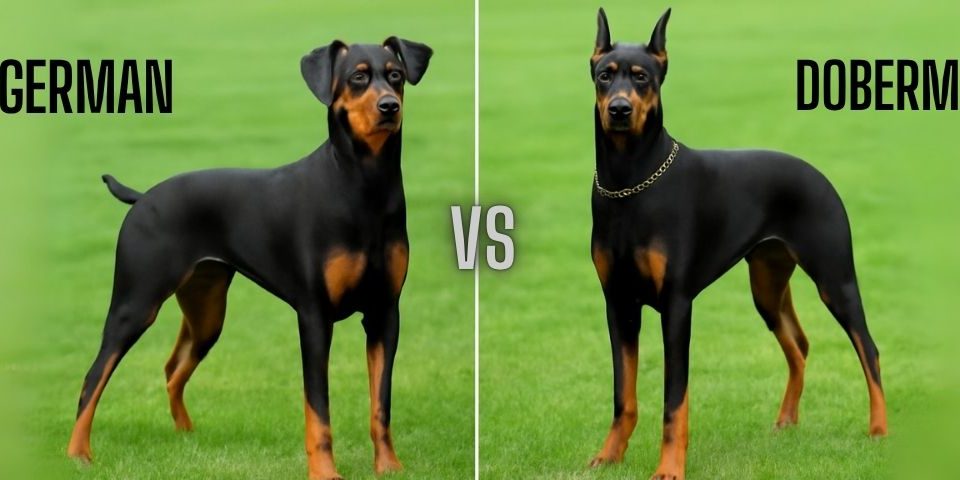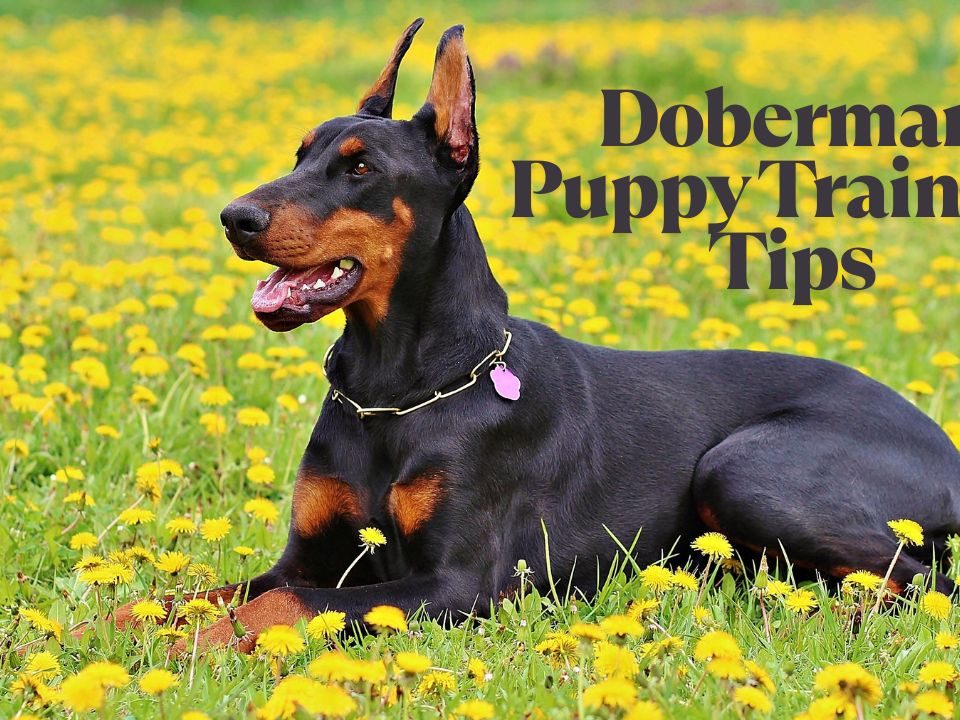
Doberman Weight Chart: Ideal Growth & Size Guide
March 25, 2025
07 Reasons to Get a Doberman Pinscher Breed – EODOB
April 20, 2025Summary:
Wondering if Doberman Pinschers shed? The answer is yes, but not excessively. Dobermans have short, single-layer coats that shed moderately and consistently throughout the year. Shedding levels can vary based on health, diet, and grooming habits. According to a reputable European Doberman breeder, these dogs are relatively low-maintenance when it comes to grooming, especially when raised on a balanced diet and given regular brushing. With the right care and effective cleaning routines, you can keep shedding under control and maintain a hair-free home. This guide covers everything you need to know about Doberman shedding, how much they shed, and practical tips to manage it effectively.
Doberman Pinschers do shed, but not excessively. They have a short, smooth, and single-layered coat, which means they lack the thick undercoat that many double-coated breeds have. This undercoat is typically responsible for heavy seasonal shedding in breeds like Huskies or German Shepherds. Because Dobermans have only a single coat layer, their shedding is generally moderate and occurs year-round rather than in seasonal “blowouts.”
Shedding Pattern
- Moderate Shedding: Dobermans shed consistently throughout the year.
- No Seasonal Blowout: Unlike double-coated breeds, Dobermans do not have a heavy shedding season where large amounts of fur come out at once.
- Short Hair: The short length of their fur means shed hairs are less noticeable and easier to manage than longer-haired breeds.
Coat Colors and Shedding
Dobermans come in several coat colors, including black and rust, red and rust, blue and rust, and fawn and rust. The color of the coat does not affect the amount of shedding; all Dobermans shed roughly the same amount regardless of their coat color.
Why Do Dobermans Shed?
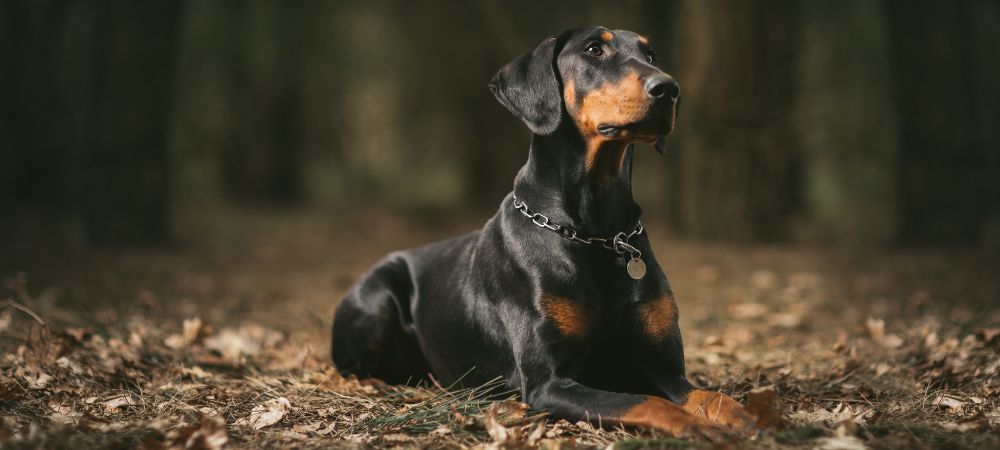
Shedding is a completely normal and healthy biological process in dogs. For Dobermans, shedding allows the body to eliminate old, damaged, or dead hair, making way for fresh, healthy growth. While shedding is natural, the amount and frequency can vary based on several contributing factors. Let’s break them down:
1. Natural Causes
These are shedding factors that stem from the dog’s normal physiology and environment:
Hair Growth Cycle
Like all dogs, Dobermans undergo a natural hair growth cycle that includes three stages:
- Anagen (Growth Phase): Hair actively grows from the follicle.
- Catagen (Transition Phase): Growth slows, and follicles begin to shrink.
- Telogen (Shedding Phase): Old hairs fall out, making space for new ones.
This cycle happens consistently throughout the year, which is why Dobermans shed at a steady rate rather than seasonally.
Age
Younger Dobermans, especially puppies, have softer and finer coats. As they grow, their adult coat develops, which can lead to noticeable shedding during that transition. Older dogs may also shed more due to age-related changes in skin and coat health.
Seasonal Changes
Although Dobermans aren’t double-coated and don’t go through intense seasonal shedding like Huskies or German Shepherds, you might still notice a slight uptick in shedding during spring and fall. These are the body’s subtle responses to temperature and daylight changes, prompting a mild increase in hair loss.
2. External and Internal Factors
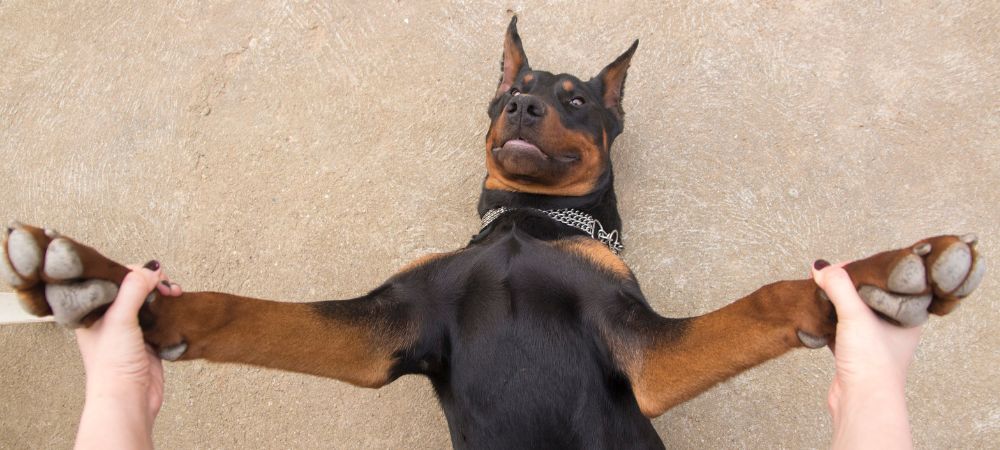
These influences can either amplify natural shedding or point to underlying problems that require attention.
Diet
A poor or unbalanced diet can significantly affect coat health. Dobermans need high-quality proteins and essential fatty acids (especially omega-3 and omega-6) to maintain a glossy, resilient coat. A deficiency in these nutrients can cause:
- Dry, flaky skin
- Dull fur
- Excessive or patchy shedding
Improving nutrition often results in noticeable coat improvement and reduced shedding.
Health Issues
Excessive or sudden shedding can be a sign of an underlying medical issue. Some common health-related causes include:
- Skin Infections: Bacterial or fungal infections can irritate the skin and lead to hair loss.
- Allergies: Food allergies, environmental allergens (like pollen or dust), or even certain shampoos can cause inflammation and shedding.
- Parasites: Fleas, ticks, and mites damage the skin and cause hair loss through irritation and constant scratching.
- Hormonal Imbalances: Conditions such as hypothyroidism (low thyroid levels) are known to cause excessive, uneven shedding and dry, thinning coats.
Always seek veterinary care if your Doberman has bald spots, red or inflamed skin, or a sudden increase in shedding.
Stress
Like humans, dogs react to stress in physical ways. Major changes such as:
- Moving to a new home
- Travel
- Loud noises (e.g., fireworks or storms)
- New family members or pets
Grooming Habits
Infrequent brushing or poor grooming routines allow dead hair to remain on the coat, which leads to increased shedding around the home. Regular brushing not only removes loose hair but also stimulates the skin and distributes natural oils for a healthier coat. Neglecting grooming can make shedding more noticeable and harder to control.
When to See a Vet
If your Doberman is shedding more than usual, has bald patches, or shows signs of skin discomfort (scratching, redness, flaking), it’s essential to consult a veterinarian. A professional checkup can identify medical issues early and ensure your Doberman stays healthy from head to tail.
How to Manage Doberman Shedding?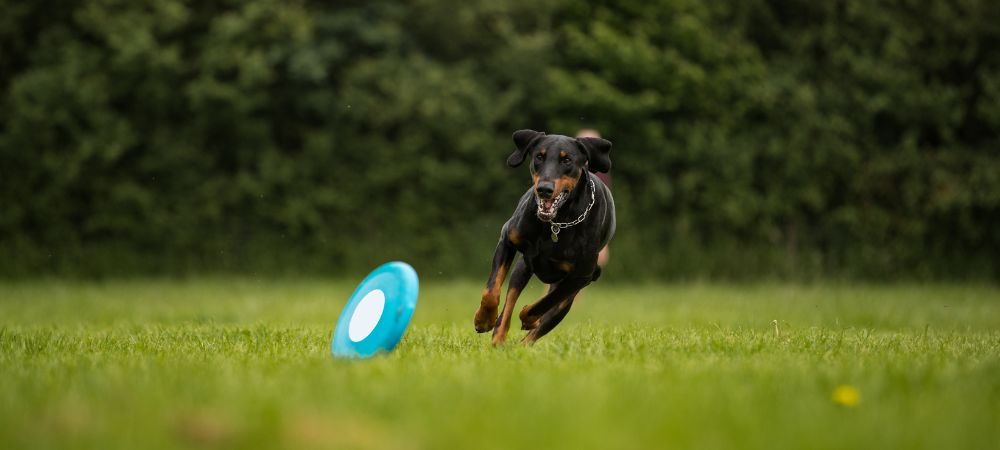
While you cannot completely stop your Doberman from shedding, you can significantly reduce the amount of loose hair in your home and keep your dog’s coat healthy and shiny by following these practical tips.
1. Regular Brushing
Brushing is the most effective way to manage shedding.
- Frequency: Brush your Doberman at least once a week. During times when shedding seems heavier, increase brushing to 2-3 times per week.
- Tools: Use a grooming mitt, rubber curry brush, or bristle brush designed for short-haired dogs.
- Benefits: Brushing removes loose fur before it falls off naturally, distributes natural oils that keep the coat healthy, and stimulates blood circulation in the skin.
2. Bathing
Bathing helps remove loose hair and dirt, but should be done carefully.
- Frequency: Bathe your Doberman about once a month or as needed.
- Shampoo: Use a mild, dog-specific shampoo formulated for sensitive skin.
- Avoid Overbathing: Too frequent baths can strip natural oils from the skin, leading to dryness and increased shedding.
- Drying: After bathing, dry your dog thoroughly to prevent skin irritation.
3. Nutrition and Diet
A healthy diet plays a vital role in maintaining a shiny coat and minimizing shedding.
- High-Quality Food: Feed a balanced diet rich in animal proteins and omega-3 and omega-6 fatty acids.
- Supplements: Consider supplements like fish oil or flaxseed oil after consulting your veterinarian.
- Hydration: Ensure your dog has access to fresh water at all times.
4. Stress Management and Exercise
Stress can contribute to hair loss, so maintaining a stable routine is important.
- Exercise: Regular physical activity helps reduce stress and promotes overall health.
- Environment: Provide a calm and comfortable living space.
- Mental Stimulation: Engage your Doberman with activities like training dobermans, interactive play, and socialization to keep their mind active.
5. Regular Veterinary Checkups
- Skin Checks: Have your vet examine your dog’s skin and coat during routine visits.
- Parasite Control: Use flea and tick preventatives as recommended.
- Health Monitoring: Address any signs of illness or skin problems promptly.
6. Home Cleaning Tips
- Vacuum Frequently: Use a vacuum cleaner with a pet hair attachment to keep floors and furniture fur-free.
- Lint Rollers: Keep lint rollers handy for quick removal of hair from clothing.
- Wash Bedding: Regularly wash your dog’s bedding and blankets to reduce hair accumulation.
Conclusion:
Doberman Pinschers do shed, but with proper grooming, diet, and care, their shedding is completely manageable. These sleek, intelligent dogs reward their owners with loyalty and elegance, and in return, they simply need consistency and attention to their physical well-being.
Whether you’re a first-time owner or a lifelong Doberman lover, understanding your dog’s shedding habits is key to a cleaner home and a happier pup. Thinking of adding one to your life? Explore trusted sources for Doberman puppies for sale, and make sure to adopt Doberman Puppies from a responsible, reputable Doberman breeder who prioritizes health and care.
Thinking of adding a Doberman to your family? Consider choosing a European Doberman breeder known for producing strong, well-tempered, and health-tested bloodlines. A reputable breeder ensures your new companion comes from a lineage focused on quality, not just appearance.
Frequently Asked Questions
Q: Do Doberman Pinschers shed a lot?
A: No. They’re moderate shedders with short, single-layer coats.
Q: How much do Dobermans shed compared to other breeds?
A: Less than double-coated breeds, more than hypoallergenic ones.
Q: Do Dobermans shed year-round?
A: Yes. They shed consistently without major seasonal changes.
Q: Can I stop my Doberman from shedding?
A: You can’t eliminate it, but grooming and diet reduce it significantly.
Q: Does coat color affect shedding?
A: No. Shedding isn’t influenced by coat color.
Q: What if my Doberman is shedding excessively?
A: Visit a vet to check for stress, diet issues, or health problems.

